What Does Wellness Mean to You?
Wellness might be one of the most overstated and broadly defined terms in the senior living industry—at least in how it is modeled from one community to the next—and it can be exhausting trying to keep up. At community A, wellness might refer to your health service offices, therapy gym, or clinician staff; whereas wellness at community B might refer to your fitness spaces and programming. Neither of those models is wrong. Neither of those models is necessarily correct, either.
.jpg?width=434&name=GettyImages-1161759077%20(1).jpg) When we’re talking about whole-person well-being, it isn’t just the health care options available, or the fitness program offerings. Communities should be cautious about how narrowly they define “wellness” when connecting it to their physical spaces or services. This can have a significant impact in the messaging of your community culture to your residents and prospective residents. Supporting resident well-being should flow through every nook, cranny, department, and service under your roof; however, many communities miss opportunities because they want the word “wellness” labeled on a space or department.
When we’re talking about whole-person well-being, it isn’t just the health care options available, or the fitness program offerings. Communities should be cautious about how narrowly they define “wellness” when connecting it to their physical spaces or services. This can have a significant impact in the messaging of your community culture to your residents and prospective residents. Supporting resident well-being should flow through every nook, cranny, department, and service under your roof; however, many communities miss opportunities because they want the word “wellness” labeled on a space or department.
Wellness Branding Barriers
Here are some remarks I’ve heard from communities through our consulting work, where they have unknowingly created barriers for themselves.
We can’t brand our lifestyle and wellness offerings because…
- “We call our clinic our Wellness Center, and it will confuse residents.”
You are right. If you want to put emphasis on sick care as opposed to preventative lifestyle offerings, this would cause confusion. - “We call our fitness room our Wellness Center, and it will confuse residents.”
Once again, you are right. This sends the message to residents that the only space to support their well-being is associated with physical exercise. - “Our monthly “wellness newsletter” promotes our fitness offerings.”
Once again, your communication channels with residents and how you promote monthly activities carry a connotation.
Slapping the term wellness on physical spaces, services, and communication channels narrows the potential, perspective, and understanding of how your community creates purpose and intention in resident lives. It also perpetuates the silos for staff and departments who have a stake in resident well-being, keeping them from seeing the potential of how their buy-in and collaboration can make an impact. (We’ll talk more about that collaboration piece in part 3 of this blog series.)
Questions for Starting a Wellness Branding Dialogue
Ask yourself these three questions as a guide in sparking dialogue in your community:
- What person, space, or services would come to mind for our residents if we use the word wellness?
- Does this connotation of wellness create opportunity for a broad application of purposeful lifestyle choices that spans the interests and passions of all residents?
- What barriers can we identify that limit our potential for broadening that definition of wellness?
Identifying your current model and barriers is your first step in making positive change toward more effectively use that term “wellness” to your community’s advantage. And now that you’ve defined and branded wellness, part 2 of this series talks about the importance of designating a staff wellness champion for your community.
Wellness Consulting from NIFS
Need some support? NIFS provides wellness consulting to senior living communities across the US. Visit our website and download the “What to Expect from a NIFS Consulting Visit” for more information.


%20and%20dog%20GettyImages-890287958%20(1).jpg?width=300&name=Senior%20(male)%20and%20dog%20GettyImages-890287958%20(1).jpg)

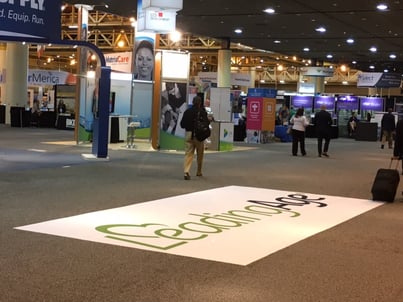 This week more than 7,000 professionals working in senior housing and related businesses converged in New Orleans, LA, to share their passions, learn from each other, and return back to their communities inspired to continue doing great work for the older adults they serve. I was honored to be at the
This week more than 7,000 professionals working in senior housing and related businesses converged in New Orleans, LA, to share their passions, learn from each other, and return back to their communities inspired to continue doing great work for the older adults they serve. I was honored to be at the .jpg?width=320&name=LeadingAge%202017%20(2).jpg) As I sat in the
As I sat in the 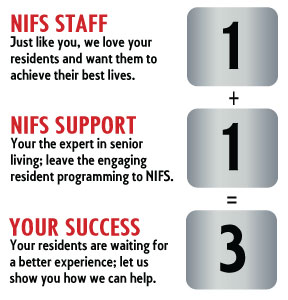
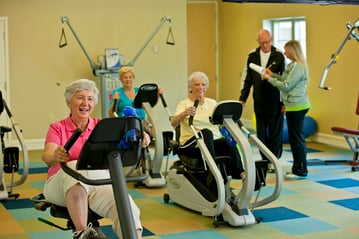 You need your fitness center to be a hallmark, a standout for the community. For your current residents, it should be one of the most praised offerings both because the staff are well-loved and because they are effective at keeping residents engaged with new, consistent, well-done offerings. The fitness program should also be on the list of reasons prospective residents choose your community. But if the group fitness calendar and the personal training services look the same as all the competition, and if you don't have the necessary data to tell key stories about how resident's lives have been improved by participating, then you're missing out on an opportunity.
You need your fitness center to be a hallmark, a standout for the community. For your current residents, it should be one of the most praised offerings both because the staff are well-loved and because they are effective at keeping residents engaged with new, consistent, well-done offerings. The fitness program should also be on the list of reasons prospective residents choose your community. But if the group fitness calendar and the personal training services look the same as all the competition, and if you don't have the necessary data to tell key stories about how resident's lives have been improved by participating, then you're missing out on an opportunity.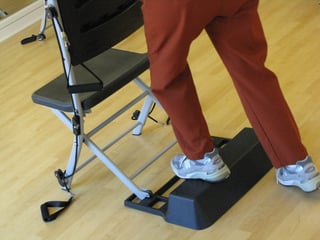 Fall prevention. It's a big deal in senior living. When a resident falls, the
Fall prevention. It's a big deal in senior living. When a resident falls, the 
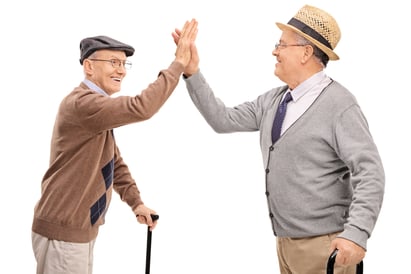 Here are some of the ways the residents reap the benefits of collaborative programming with senior living communities outside of their own.
Here are some of the ways the residents reap the benefits of collaborative programming with senior living communities outside of their own.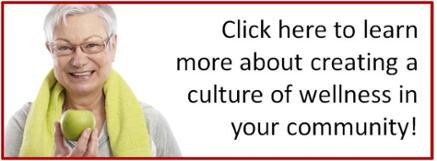
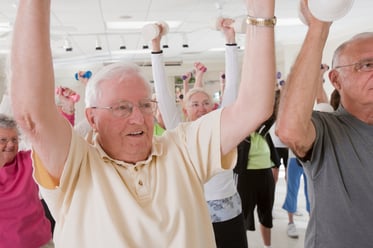 Activities Directors in assisted living and memory care environments are busy. They have a lot of balls in the air, not the least of which is some type of movement-based programming for their residents. Unfortunately, that specific element of their enrichment programming often takes a back seat to other priorities.
Activities Directors in assisted living and memory care environments are busy. They have a lot of balls in the air, not the least of which is some type of movement-based programming for their residents. Unfortunately, that specific element of their enrichment programming often takes a back seat to other priorities.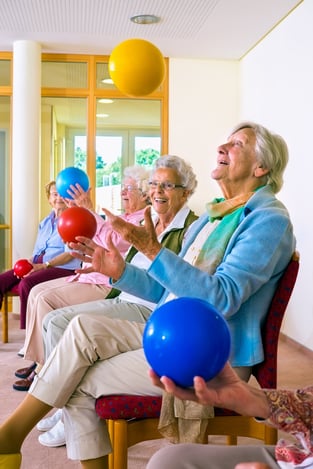 Group exercise classes are one of the top activities in senior living communities nowadays. With the increasing number of activities provided on community calendars, having a good group exercise program
Group exercise classes are one of the top activities in senior living communities nowadays. With the increasing number of activities provided on community calendars, having a good group exercise program 
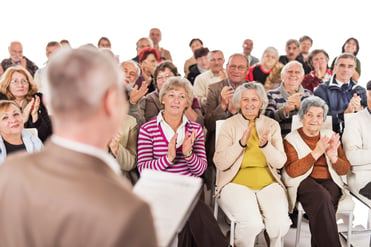

 Several months ago, my parents were prospects in the market to relocate to a continuing care retirement community (CCRC) from their 4.5-acre home of almost 20 years. There were a variety of reasons for them making this move consideration, but age and ill health weren’t on that list.
Several months ago, my parents were prospects in the market to relocate to a continuing care retirement community (CCRC) from their 4.5-acre home of almost 20 years. There were a variety of reasons for them making this move consideration, but age and ill health weren’t on that list. 